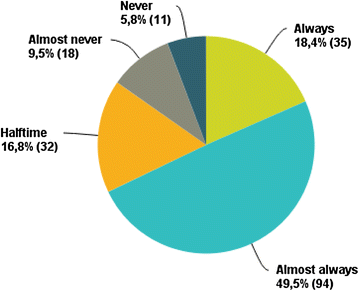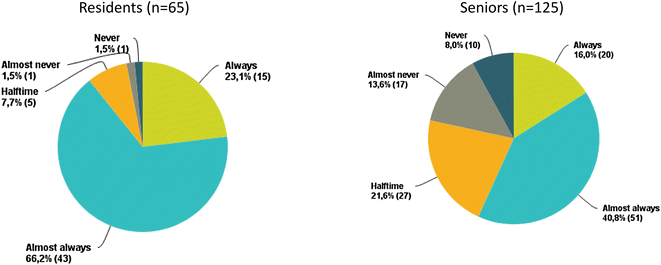Practice of ultrasound-guided central venous catheter technique by the French intensivists: a survey from the BoReal study group
- PMID: 27502195
- PMCID: PMC4977263
- DOI: 10.1186/s13613-016-0177-x
Practice of ultrasound-guided central venous catheter technique by the French intensivists: a survey from the BoReal study group
Abstract
Background: The ultrasound (US)-guided technique has been recommended for central venous catheter (CVC) placement in critical care. However, several surveys have shown that the majority of physicians continue to perform landmark procedures. In our region, we have implemented special courses to promote the use of US with formal training and simulators. Ultrasound machines have also been installed in almost every ICU in our area. We designed a survey to investigate whether the training program established for years and the widespread of ultrasound devices in the ICU of our region will be associated with a high rate of physicians performing US procedures.
Methods: A survey comprising 14 questions was designed to elicit information on training in US techniques, the use of US for CVC placement, reasons for nonuse of US and their opinion concerning the need to teach the landmark technique to residents. This survey was electronically sent to every physician of the BoReal study group (32 ICUs located in the North West of France).
Results: We received 190 responses (response rate 66 %) including 34 % of residents. Only 11 % of respondents reported the absence of training in the US technique, and 3 % reported they did not have access to an ultrasound machine. A total of 68 % declared "always" (18 %) or "almost always" (50 %) using US to guide CVC placement. Our results are better than those of previous surveys. The main reasons why physicians did not use the US technique were that they thought that US guidance was unnecessary (36 %) or because the ultrasound machine was not immediately available (33 %). Ninety-one percentages think that the landmark technique should still be taught to the residents. A higher proportion of residents compared to seniors declared that they always or almost always used the US technique.
Conclusion: Training in ultrasound techniques and the widespread availability of ultrasound machines in ICUs seem to improve the rate of US procedures. However, despite strong scientific evidence a proportion of physicians continue to consider the landmark technique as an alternative to US. Training and education are potentially still the best ways to overcome such barriers or conviction.
Keywords: Central venous catheter; Education; Ultrasound.
Figures
References
-
- National institute for clinical excellence NICE Technology Appraisal No. 49: guidance on the use of ultrasound locating devices for placing central venous catheters. http://www.nice.org.uk/nicemedia/live/11474/32461/32461.pdf (2002).
-
- Troianos CA, Hartman GS, Glas KE, Skubas NJ, Eberhardt RT, Walker JD, et al. Guidelines for performing ultrasound guided vascular cannulation: recommendations of the American Society of Echocardiography and the Society of Cardiovascular Anesthesiologists. J Am Soc Echocardiogr. 2011;24:1291–1318. doi: 10.1016/j.echo.2011.09.021. - DOI - PubMed
LinkOut - more resources
Full Text Sources
Other Literature Sources



